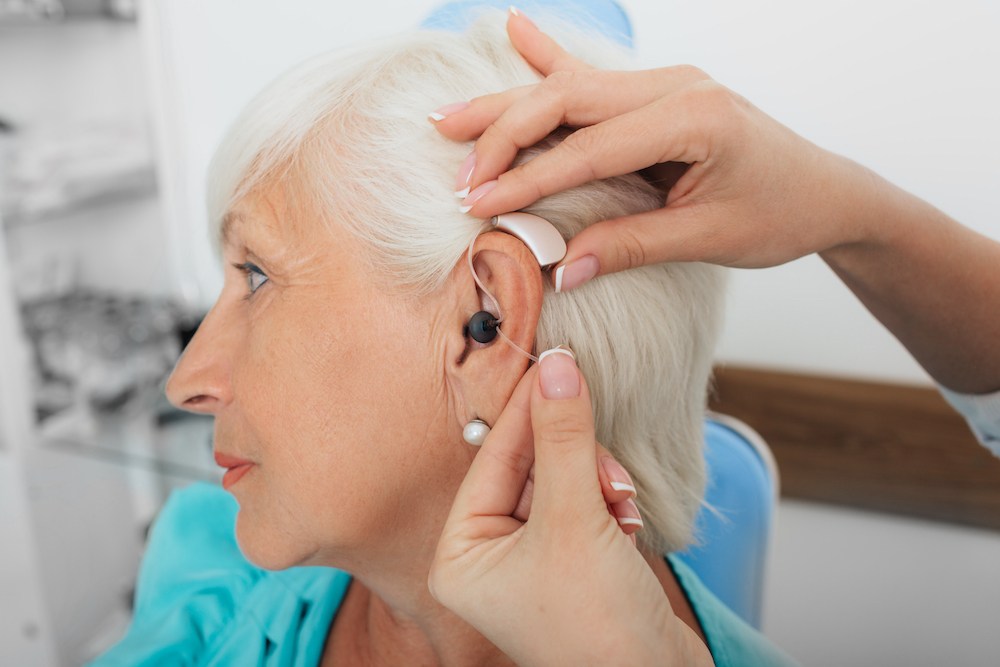ENT Health Tips for Frequent Travelers
Many travelers prepare carefully for packing and lodging but often

By: admin | April 24, 2025
Spring brings renewal and warmer weather, but for many of us, it also brings uncomfortable sinus problems. As trees bloom and pollen counts rise, distinguishing between seasonal allergies and chronic sinus issues becomes increasingly difficult. That stuffy nose, facial pressure and persistent headache can quickly turn springtime from pleasant to painful.
When your sinuses are inflamed, everyday activities become challenging. Simple pleasures like morning walks, gardening or outdoor gatherings with friends can lose their appeal. Your sleep quality often suffers, leaving you tired during the day when you want to enjoy the season’s longer, sunnier hours.
What makes spring particularly frustrating is the confusion between different causes of sinus discomfort. Is that congestion from allergies, a sinus infection or something else entirely? Without knowing the root cause, finding effective relief becomes a process of trial and error. Understanding the difference between these conditions – and how to manage them – can help you reclaim your springtime comfort and fully participate in the activities you enjoy.
Your sinuses are a connected system of hollow cavities located in the bones of your face and skull. They are lined with a thin layer of mucus and tiny hair-like structures called cilia, which help trap and move dust, germs and other particles out of the nasal passages. These cavities are connected to the nasal passages through small openings, allowing air to flow in and mucus to drain out. When everything is working properly, your sinuses help moisten the air you breathe, filter debris and support your voice’s resonance.
Sinus health depends on keeping these passages open and functioning. If inflammation, infection or structural issues block the drainage pathways, mucus can build up, leading to pressure, pain and possible infection. Common triggers like allergies, colds or seasonal weather changes can affect how well your sinuses perform.
Spring brings noticeable changes to the environment, and for many people, that means a shift in sinus health. As trees, grasses and flowers release pollen into the air, your sinus passages can become irritated and inflamed, especially if you’re sensitive to seasonal allergens. This inflammation, often known as seasonal rhinitis or hay fever, can lead to pressure, congestion, headaches and general discomfort. In addition to pollen, outdoor molds – common on damp leaves, soil and grass – can trigger similar responses in your sinuses, especially after rainfall or yardwork.
Rapid shifts in temperature and humidity during spring can also affect how your sinuses function. Dry air can cause sinus tissues to become irritated, while overly humid conditions may encourage the growth of airborne allergens. Staying informed about daily pollen counts and weather changes can help you plan ahead – limiting time outdoors on high-pollen days or using air purifiers indoors, for example. If spring regularly brings on sinus trouble, reaching out to a healthcare provider can help you identify what’s causing your symptoms and what treatments may bring relief.
Springtime sinus issues often show up through a range of persistent and uncomfortable symptoms. One of the most common is nasal congestion, which can make breathing through your nose difficult and leave you feeling constantly stuffed up. This is often paired with a runny nose or postnasal drip, where excess mucus drains down the back of the throat, sometimes causing a sore throat or frequent throat clearing. Sinus pressure and facial pain are also typical, especially around the eyes, cheeks and forehead.
Many people experience headaches, often worsened by bending forward or sudden movements. Itchy eyes, sneezing and a reduced sense of smell can also indicate that your sinuses are reacting to spring allergens like pollen or mold. When these symptoms persist beyond a few days or become more intense during certain times of day – especially after being outdoors – they may point to seasonal sinus inflammation rather than a common cold.
Pollen, released by plants for reproduction, can be inhaled or come into contact with your skin and eyes. When this happens, your immune system might react, leading to inflammation and swelling of the sinus tissues.
Pollen is everywhere during spring. Trees, grasses and flowers release these microscopic particles into the air where they can travel for miles. This makes avoiding exposure difficult, especially on windy days or when pollen counts are high.
You can’t completely rid your environment of pollen, but you can lessen its impact on your sinuses. One strategy is to check local weather reports for daily pollen counts and plan outdoor activities accordingly. On high pollen days, it might be best to stay indoors as much as possible.
When sinus discomfort becomes too much, relief might be as close as your local pharmacy. OTC solutions can provide quick and effective relief for many common sinus problems. From nasal sprays to decongestant tablets, these remedies can help reduce inflammation and ease congestion.
Nasal sprays like saline solutions are a popular choice. They moisturize the nasal passages, soothe irritated tissues and help wash away allergens like pollen. Decongestant tablets aim to shrink swollen nasal tissues and relieve sinus pressure. Always follow the package instructions carefully when using these products.
Natural remedies like steam inhalation or warm compresses can also provide relief from sinus discomforts. They increase humidity and warmth around your nose area, helping alleviate congestion. While OTC solutions may offer immediate relief, it’s always a good idea to consult with your ENT doctor if your symptoms persist or worsen over time.
It can be hard to know when sinus issues move from a seasonal annoyance to something that needs professional attention. If your symptoms last more than 10 days without improvement, or they seem to get better and then quickly return, it might be time to consider seeing an ENT doctor. Persistent facial pain or pressure, thick nasal discharge or recurring sinus infections are signs that your sinuses aren’t draining properly and could need medical intervention. An ENT can help determine whether there’s an underlying condition, such as chronic sinusitis or a structural problem, contributing to your discomfort.
Other warning signs include sinus symptoms that interfere with your sleep, affect your ability to focus during the day or are accompanied by fever, swelling around the eyes or vision changes. These may indicate more serious complications that shouldn’t be ignored. An ENT specialist can offer a thorough evaluation and discuss options ranging from medication and allergy management to procedures that help improve airflow and drainage. Getting the right treatment can prevent long-term issues and significantly improve your quality of life during allergy season and beyond.
Taking care of your sinuses goes well beyond medication or office visits. In fact, small, consistent changes in your daily habits can make a meaningful difference. Hydration plays a big part in sinus health – drinking plenty of water helps thin out mucus, making it easier for your sinuses to drain properly and reducing the chance of blockage. Using a humidifier at home, especially during dry days, can also help keep nasal passages from becoming irritated or inflamed. Saline nasal sprays or rinses are another simple option that can flush out allergens, dust and excess mucus, giving your sinuses a fresh start.
Being mindful of your environment also matters. Try to keep windows closed on days when pollen counts are high, and change clothes after being outdoors to avoid bringing allergens inside. Showering before bed can wash off pollen and keep it from settling into your bedding. Regular cleaning of air filters in your home and car can also limit exposure to dust and mold. These small adjustments might not seem like much on their own, but together they support a healthier sinus system and help minimize discomfort throughout the spring season.
Preventing future sinus problems often begins with reducing exposure to common irritants and allergens that trigger inflammation. One of the simplest but most effective strategies is to keep your living environment clean. Dust, pet dander, mold and pollen can accumulate in household surfaces and air ducts, so regular vacuuming with a HEPA filter, wiping down surfaces and replacing HVAC filters can all limit sinus irritation. If you’re sensitive to mold, consider using a dehumidifier in damp areas like basements or bathrooms to keep mold growth under control. During spring, when pollen levels are high, it’s also wise to limit outdoor activity in the early morning when pollen counts tend to peak.
Personal hygiene habits can also go a long way in preventing sinus issues. Washing your hands frequently helps reduce the risk of transferring viruses and bacteria to your nose and eyes, both of which are common entry points for infections. Using a saline rinse or spray regularly can keep your nasal passages clear of allergens and pollutants, especially after spending time outdoors. Staying hydrated throughout the day supports your body’s natural mucus production and drainage, making it easier for your sinuses to function normally. Avoiding cigarette smoke and strong chemical fumes is equally important, as these can dry out or inflame the nasal lining.
Incorporating preventative care into your daily routine can also make a big difference. Managing allergies with OTC or prescribed medications before symptoms start may stop sinus issues before they escalate. Practicing good sleep hygiene and stress management helps your immune system stay strong, making you less vulnerable to infections that can lead to sinus complications. And if you know you’re prone to chronic sinus trouble, don’t wait for symptoms to get worse – talk with your ENT doctor about strategies for long-term prevention, including whether seasonal allergy management, immunotherapy or changes to your environment might be helpful.
Sinus discomfort doesn’t have to define your spring. By paying attention to your symptoms and learning what triggers them, you can take more informed steps toward feeling better. Whether it’s managing pollen exposure, using a daily saline rinse or speaking with a healthcare provider about persistent issues, even small changes can bring noticeable relief. The more you understand how your sinus system responds to seasonal changes, the easier it becomes to prevent flare-ups before they disrupt your daily routine.
If symptoms continue despite your efforts, it may be time to go beyond home remedies. Chronic congestion, facial pain or sinus infections that keep returning are signs that you might benefit from professional guidance. An ENT doctor can help determine whether allergies, structural issues or ongoing inflammation are at the root of your discomfort – and recommend treatments tailored to your needs. At Grand Rapids ENT, serving the communities in Allendale, Grand Rapids and Wyoming, MI, you can reach experienced specialists by calling 616-249-8000.

Many travelers prepare carefully for packing and lodging but often
By: admin | August 21, 2025

Spring brings renewal and warmer weather, but for many of us, it also
By: admin | April 24, 2025

Even as winter begins to fade, unpredictable cold spells and moisture
By: admin | March 21, 2025
